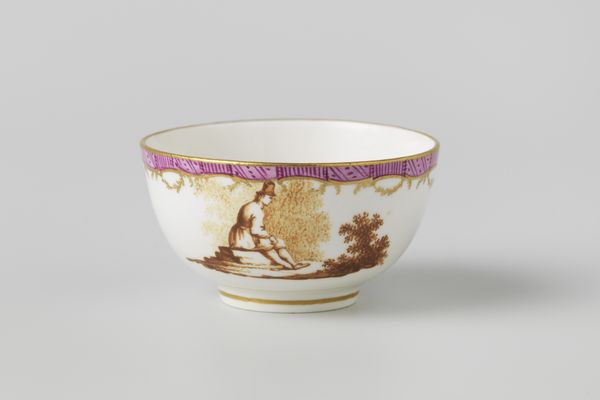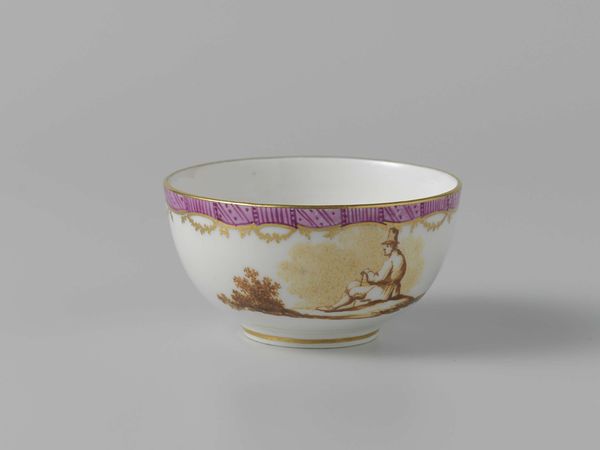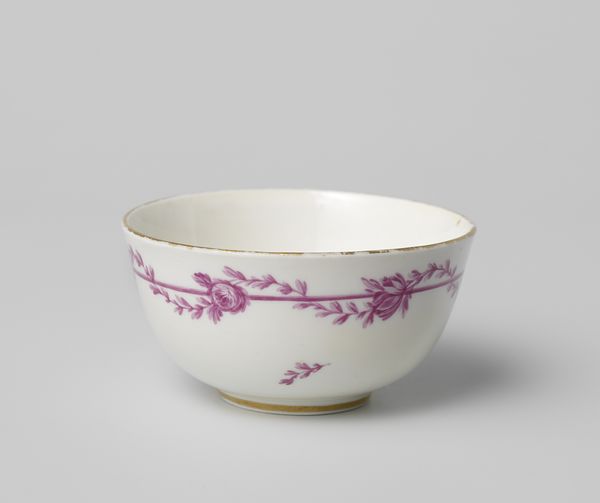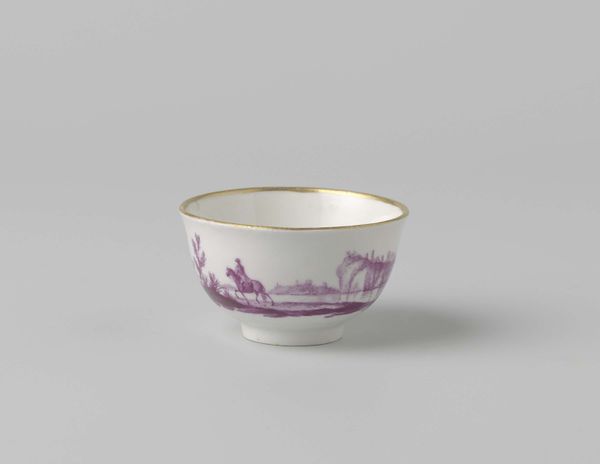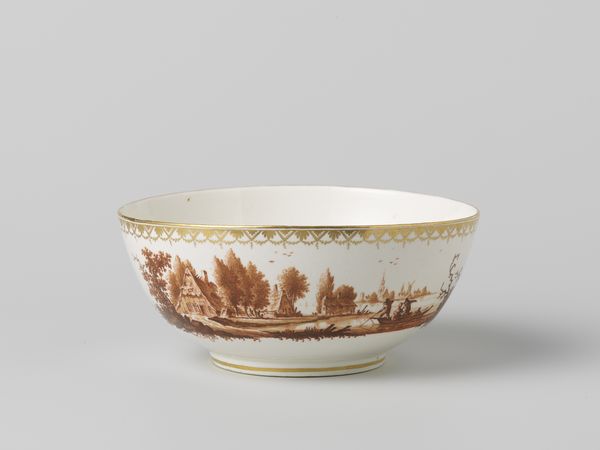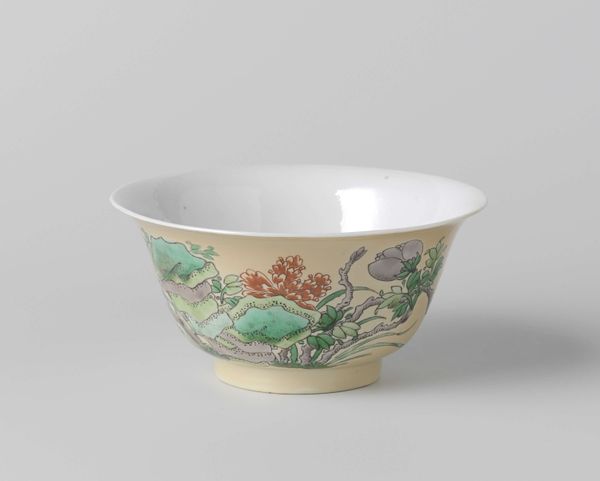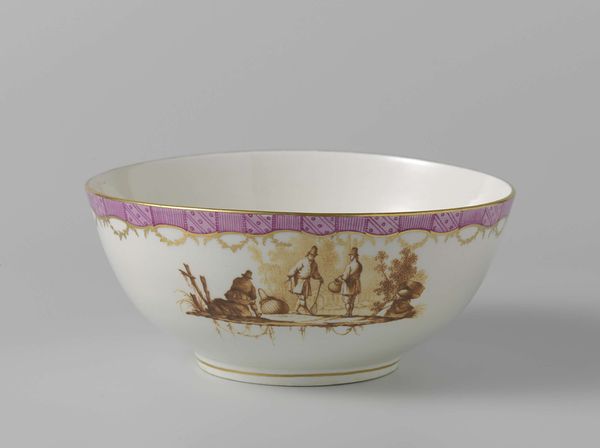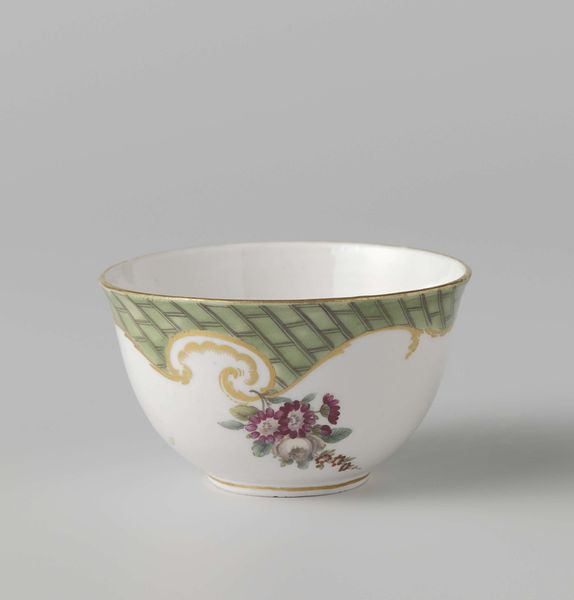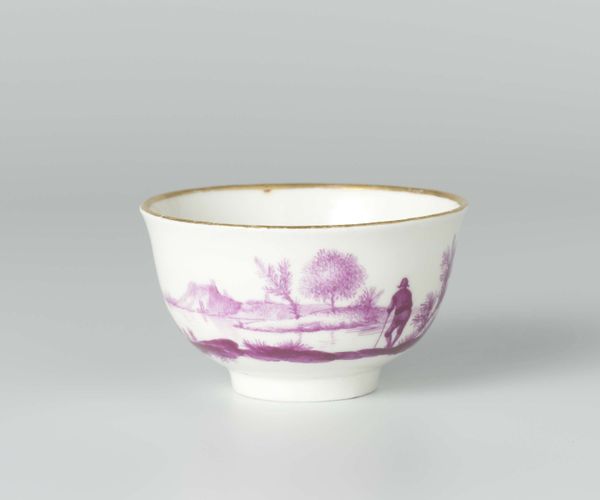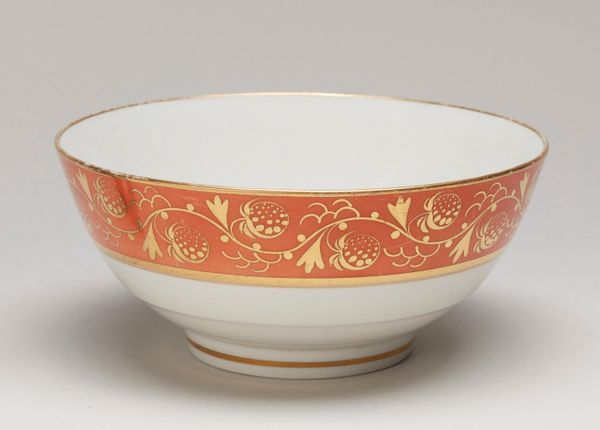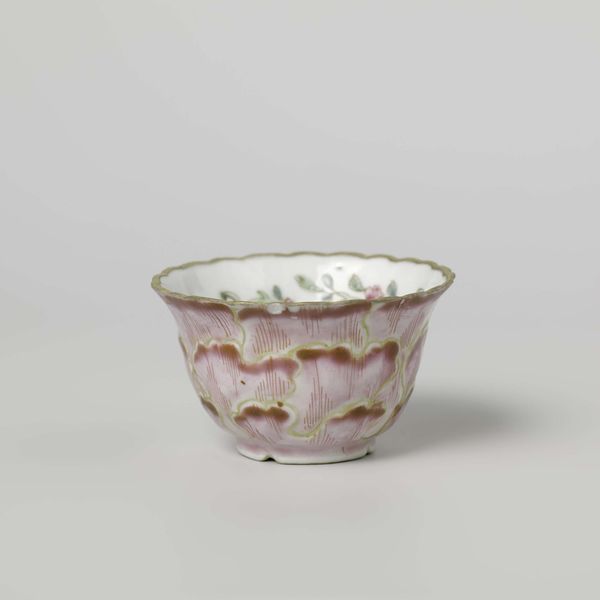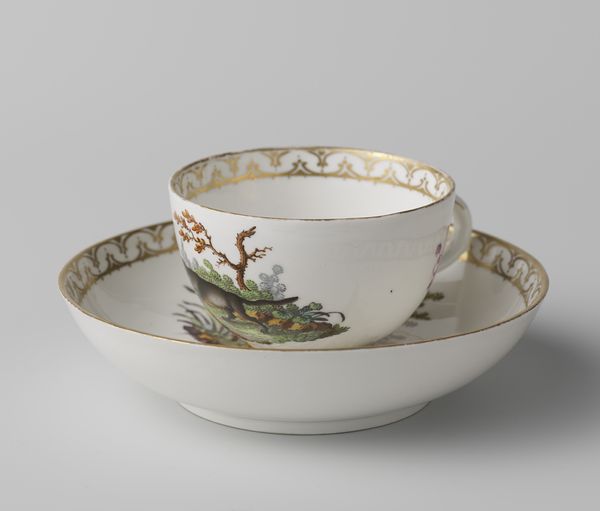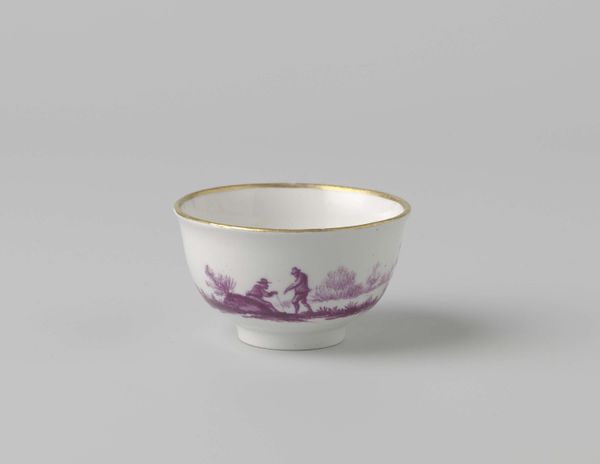
Dimensions: height 3.8 cm, diameter 6.8 cm
Copyright: Rijks Museum: Open Domain
Curator: The piece before us, known as 'Theekop,' was crafted by the Loosdrecht manufactory between 1774 and 1778. It's an earthenware tea bowl, currently residing here at the Rijksmuseum. Editor: Well, first thought? Melancholy picnic. All that ornate detail around the rim combined with the sepia scene…it feels a bit bittersweet, like summer's end in a Jane Austen novel. Curator: Indeed, that sepia, or more accurately, the shades of brown, provide a monochromatic scheme offset by the careful ornamentation along the rim. We observe a classical Rococo sensibility, where form and decoration coexist in a delicate tension. Consider the symmetry, how the seated figure anchors the composition and draws the eye across the surface. Editor: But is that guy bored, or what? He's just plopped there with his, um, contraption... a weird-looking basket backpack! I keep imagining what he's thinking. Maybe he’s waiting for his kettle to boil! I mean, he brings such a human element that it's at odds with the decorative swirls at the edge. It's like two different stories competing. Curator: Ah, but does this ‘boredom’ challenge our expectations of pastoral scenes? It's this disruption, that slight unease, that invites us to engage further. This artwork questions our assumptions about idealized life, doesn't it? Editor: I see your point, in that maybe even simple things carry undertones. Rococo likes to pile up the frills, while inside, the bowl holds a simple cup of tea. The outside hints at excess; the inside contains the need for simple, human things. I guess it adds a certain psychological complexity. Curator: Precisely. It makes it very unique. Editor: It certainly has given me pause. It makes me appreciate art history’s unique ability to elevate even the most understated objects.
Comments
No comments
Be the first to comment and join the conversation on the ultimate creative platform.
